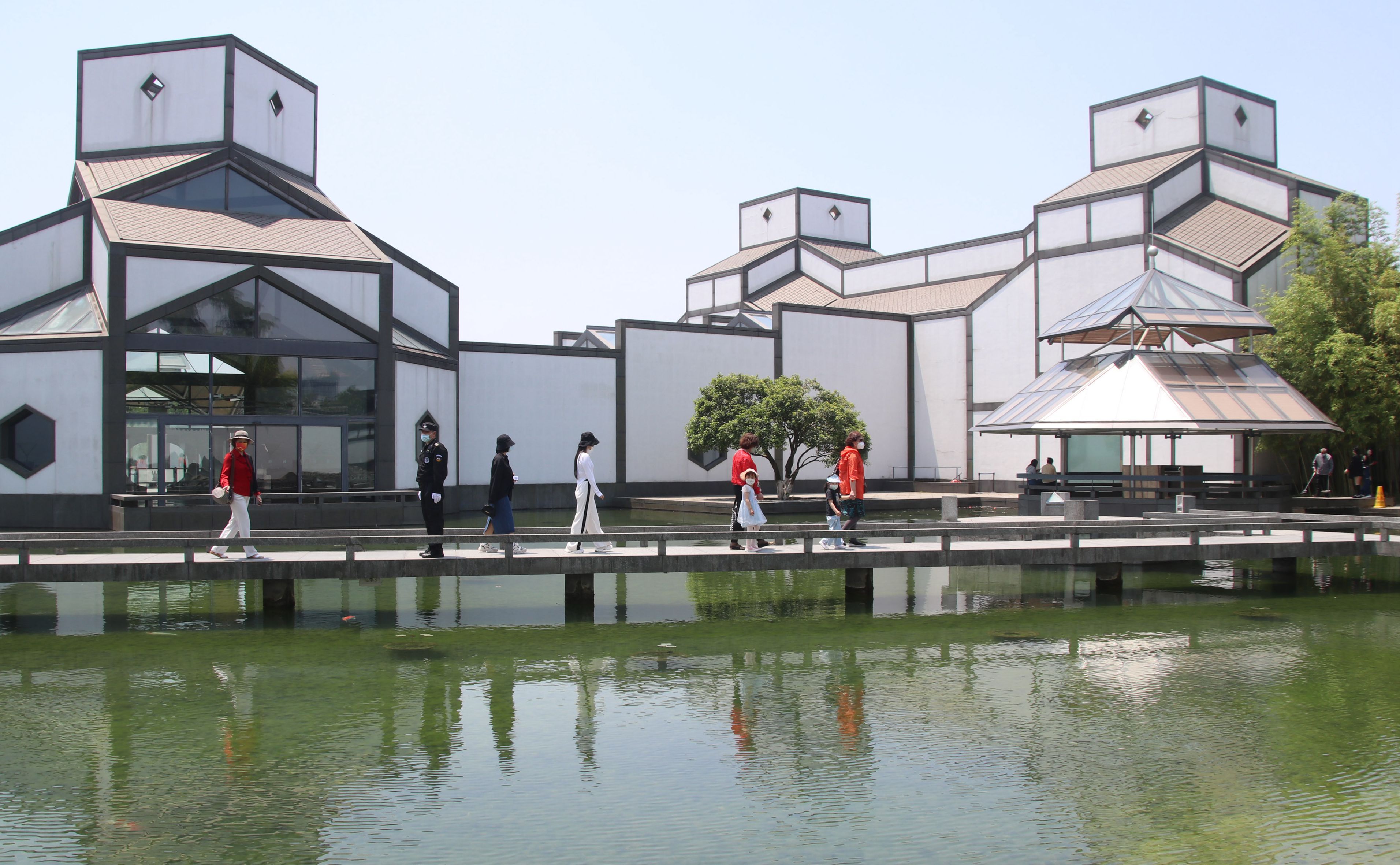Physical education in China has become a top priority in schools for improving students' health. Students have a better motivation for sports after traditional Chinese games and creative activities are introduced to PE classes.
By sportswriters He Leijing and Zhu Guoliang
NANJING, May 25 (Xinhua) -- Stepping in time to fast-paced pop tunes, dozens of boys and girls are seen briskly enjoying dance-like workouts in the playground of a middle school in the eastern Chinese city of Nanjing, with their faces wreathed in sweat and smiles.
"I adapted the movements from viral fitness videos on Douyin [the Chinese version of TikTok], and the students just jumped at the physical education classes, hoping to break a sweat," said Wang Ping, a PE teacher at Nanjing No. 13 Middle School.
"It's a great trend as more Chinese children begin to love exercise, and I'm proud to be part of it," Wang said, adding that she has been mulling over fresh ideas to set up more creative sports activities for this year's fall semester.
As awareness of children's health increases, physical exercise is no longer considered by many Chinese parents as unnecessary, and the new semester is expected to start with a few ardently embraced changes.
According to the latest guidelines issued by the Ministry of Education, students in China's nine-year free compulsory education system, which covers primary and junior middle schools, will have daily PE classes during the next 10 years.
And apart from traditional sports like football, basketball and athletics, they can choose to build up their bodies and fulfill their potential by picking activities like climbing, skateboarding and jumping rope.
"Schools are encouraged to design various creative sports classes and activities catering to the interests of the students, who can ultimately harness their sports skills and enjoy good physical and mental health," said Wang Zongping, a professor at Nanjing University of Science and Technology.
FUN SPORTS
At Nanjing Yuhua Primary School, playing diabolo, a traditional Chinese folk game, has become an everyday workout for nearly all the 367 students. The much-loved sport, in which one can throw and catch a spinning top by moving a cord fastened to two sticks, includes whole-body movements.
"The sport integrates games and fitness and is my favorite. It can help me exercise my brain and strengthen my body, and most importantly, it's so cool and fun," said Ma Jiayin, a fifth-grade student.
"We aim to make our students stay fit while having fun," said Shen Zhuzhen, headmaster of the primary school, noting that the school has also started PE classes featuring adapted dragon dance, another traditional Chinese sport.
Last year, China launched a "double reduction" policy to ease academic stress for schoolchildren. The policy has reduced excessive homework and curbed the frequency of exams and after-school tutoring in core school subjects. And since then, schools and families have placed more emphasis on sports.
Short videos of students at a primary school in south China's Guangxi Zhuang Autonomous Region participating in a group bamboo dance have gained many likes on social media. It is a novel attempt by the school to combine folk dance with its physical education.
Nearly 2,500 students run in spectacular changing formations that resemble the slithering snake from the classic mobile game Snake at Haimen No. 1 Middle School in east China's Jiangsu Province.
"We hope to bring more fun to the exercises to attract more students," said Chen Jianming, the school's PE teacher who choreographed the exercises. "In this way, students get to train their bodies while building a strong team spirit."
And inspired by the Beijing 2022 Winter Olympics, more and more schoolchildren are now whooping with delight on ice rinks and snow slopes. By the end of 2021, more than 2,800 schools across the country had integrated winter sports into their curriculums.
ELIXIR OF HEALTH
Insufficient exercise is linked to higher risks of obesity, a looming threat to the health of the younger generation. According to a report released by the China National Children's Center last year, the overweight and obesity rate of primary and secondary school students grew 8.7 percentage points from 2010 to 2019.
Research by China's health authorities showed that in 2020, the overall myopia rate among Chinese juveniles reached 52.7 percent, and a domestic report on mental health noted that the depression rate of adolescents from 2019 to 2020 was 24.6 percent.
"Exercise has other benefits beyond the physical kind. It can also boost your mood and make you more cheerful," said Goran Martinovic, a Croatian coach who runs a boxing gym in Jiangsu. "I find that in recent years, more Chinese children have been exercising for healthier lifestyles."
Education and sports departments, schools, and parents should organize and guide youths to participate in sports to prevent and control myopia and obesity, according to a recent draft revision to China's Law on Physical Culture and Sports.
"We design different courses based on the age of students to help them strengthen physical fitness and fully tap their athletic talent," said Jin Hao, a fencing coach at the Royal Grammar School Nanjing.
The school has regarded physical education as one of its core missions, as it offers more than 20 sports courses including fencing, tennis and equestrianism, and is equipped with an indoor sports center of over 8,000 square meters.
"My reaction and jumping abilities have improved a lot through daily training, and now I have a deeper understanding of teamwork. In many sports, you cannot win by yourself," said Shen Zihao, an eighth-grader at the school who loves playing frisbee.
"Winning is not everything, and the same is true when it comes to schoolwork and our life," the student added. ■












